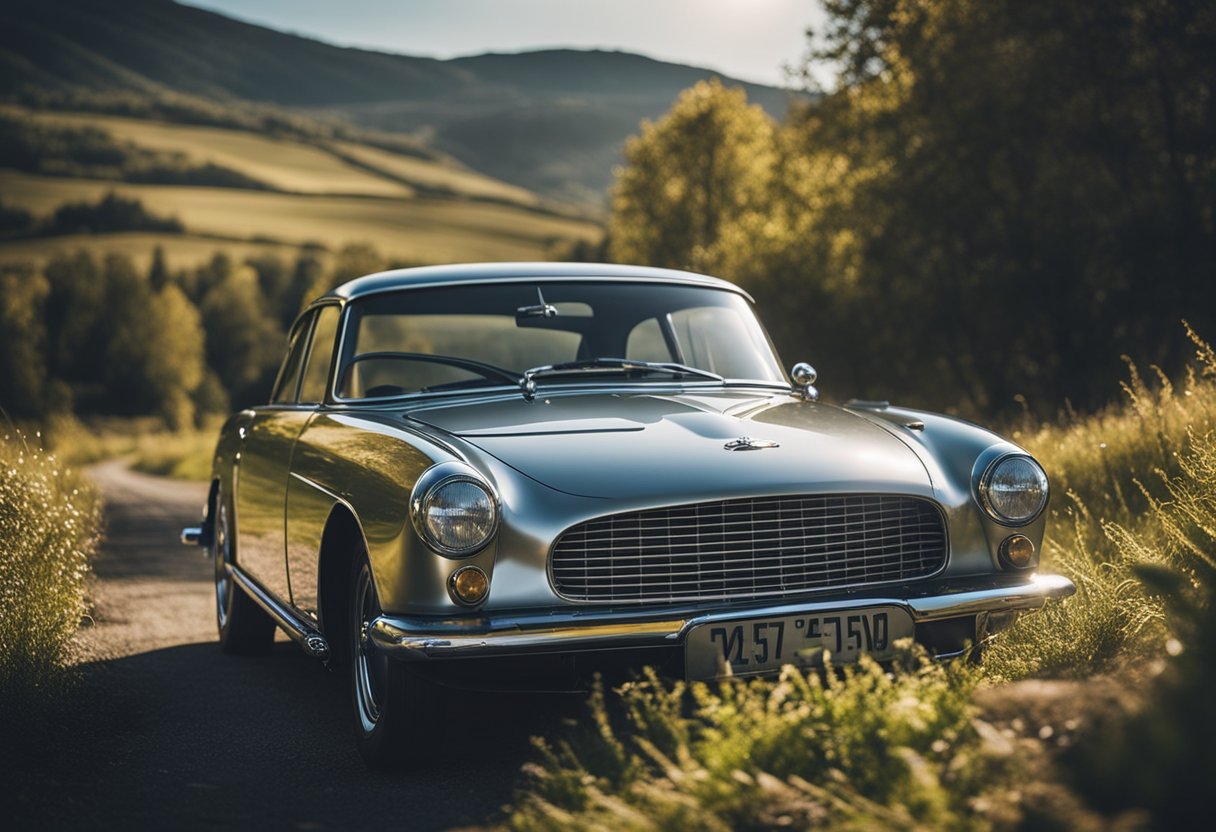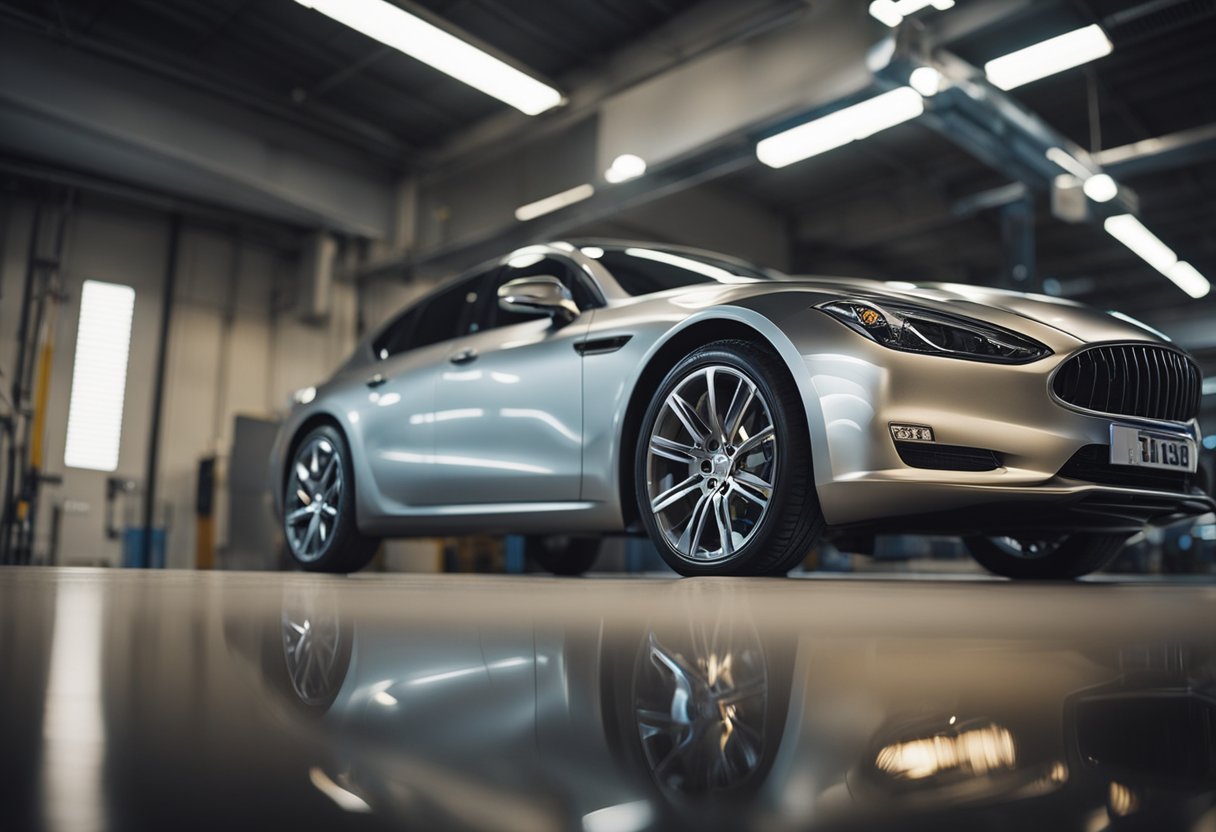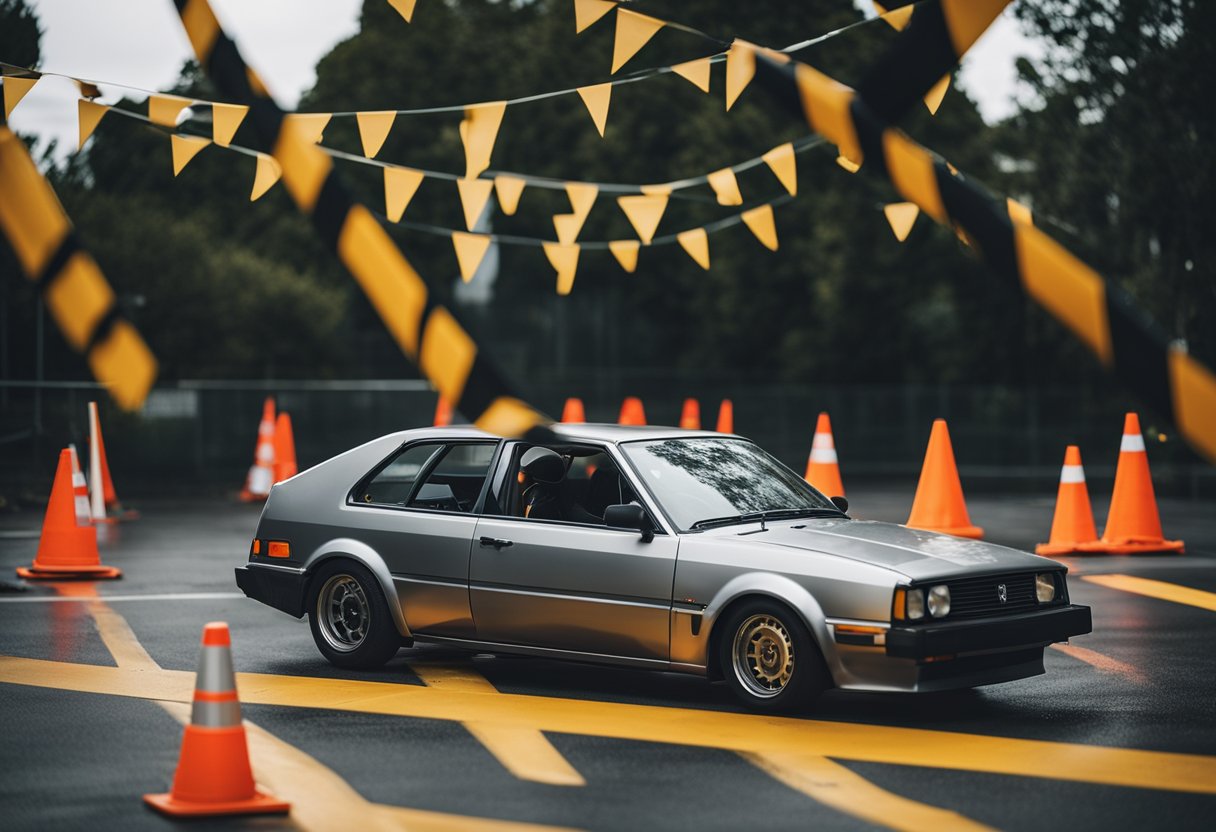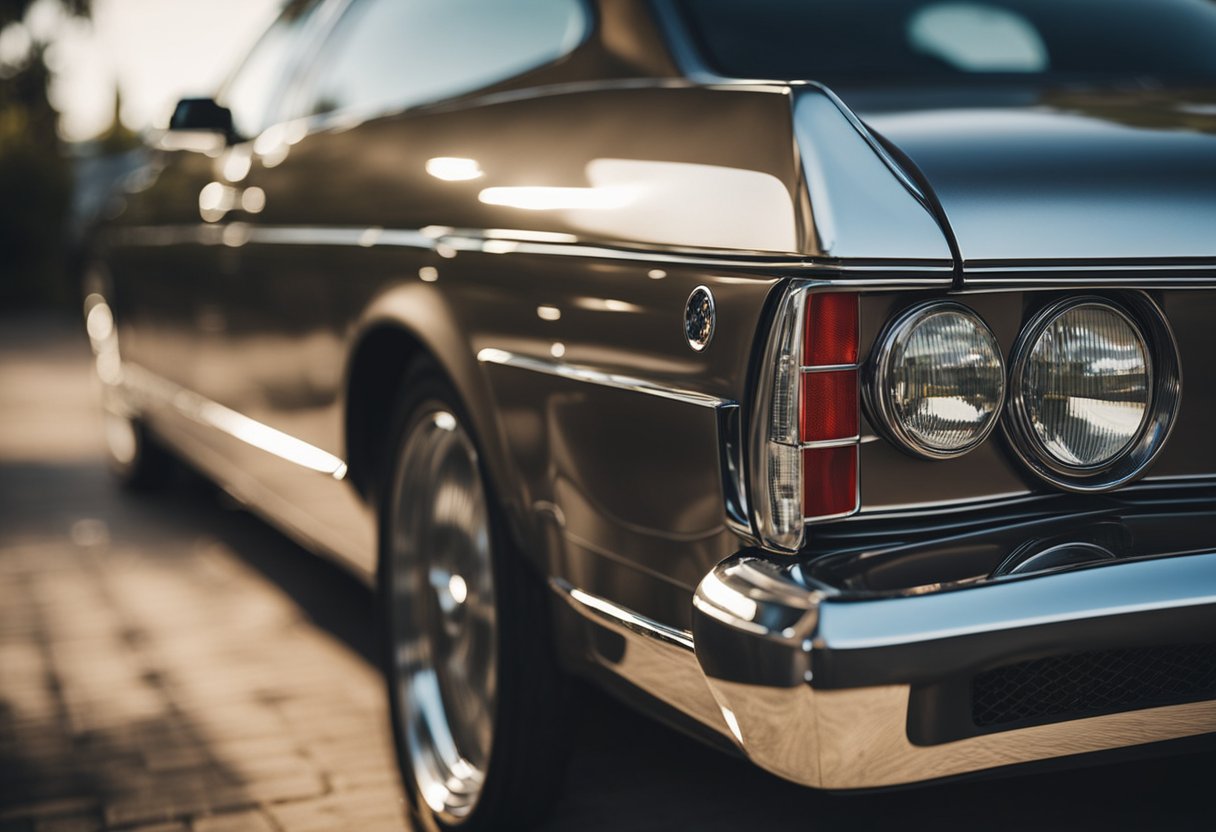When it comes to car finishes, the options are endless. From glossy to matte, metallic to pearlescent, there are plenty of choices to make your vehicle stand out. However, there’s a subculture of hot rodding that has been gaining popularity in recent years: bare metal car finish. This unique look involves leaving the metal exposed, without any paint or coating, giving the car a raw, industrial look that is both edgy and stylish.
Understanding bare metal car finish is essential if you’re considering this look for your vehicle. It’s important to know that this finish requires a lot of preparation and care, as the metal is exposed to the elements and can rust over time. However, with the right techniques and products, you can achieve a stunning, long-lasting finish that’s sure to turn heads. From preparing the car surface to dealing with imperfections, priming, painting, and post-painting tips, there are several steps to follow to achieve the perfect bare metal finish.
Key Takeaways
- Bare metal car finish involves leaving the metal exposed, giving the car a raw, industrial look that is both edgy and stylish.
- Achieving a stunning, long-lasting finish requires a lot of preparation and care, as the metal is exposed to the elements and can rust over time.
- From preparing the car surface to dealing with imperfections, priming, painting, and post-painting tips, there are several steps to follow to achieve the perfect bare metal finish.
Understanding Bare Metal Car Finish
https://www.youtube.com/watch?v=w3Vuh4k_CQU&embed=true
As a car enthusiast, I have always been fascinated by the idea of a bare metal car finish. A bare metal finish is when the car’s body is stripped of all paint and coatings to reveal the raw metal underneath. This type of finish has gained popularity in recent years, and it is not hard to see why.
One of the main advantages of a bare metal finish is that it gives the car a unique, industrial look that cannot be achieved with traditional paint. The raw metal finish creates a striking contrast against other cars on the road, making it stand out in a crowd. Additionally, a bare metal finish can be customized to suit the owner’s taste by adding different textures and finishes to the metal.
However, it is important to note that a bare metal finish requires a lot of maintenance. Bare metal is susceptible to rust and corrosion, so it is crucial to keep the car clean and dry at all times. Regular waxing and polishing are also necessary to protect the metal from the elements.
Another aspect to consider is that a bare metal finish is not suitable for all car models. Some cars have body panels that are not designed to be exposed to the elements, and a bare metal finish can cause these panels to rust and corrode quickly. It is important to consult with a professional before deciding to go with a bare metal finish.
In conclusion, a bare metal car finish is a unique and eye-catching way to customize your car. However, it requires a lot of maintenance and is not suitable for all car models. As a car enthusiast, I appreciate the beauty of a bare metal finish, but it is important to weigh the pros and cons before deciding to go with this type of finish.
Preparation for Bare Metal Finish
https://www.youtube.com/watch?v=rZ2uRFJRZsg&embed=true
When it comes to achieving a perfect bare metal finish on a car, proper preparation is key. There are two critical steps that need to be taken before painting: cleaning the car surface and sanding the car surface.
Cleaning the Car Surface
Before sanding the car surface, it is important to ensure that the surface is free of any grease, dirt, or debris. This can be achieved by using a surface cleaner that is specifically designed for automotive use. I prefer to use a degreaser that is safe for painted surfaces. It is important to follow the manufacturer’s instructions when using any cleaning product.
After applying the surface cleaner, I use a clean rag to wipe the surface clean. I make sure to remove all dirt and debris from the surface. Any remaining dirt or debris can interfere with the sanding process and result in an uneven finish.
Sanding the Car Surface
Once the surface is clean, it is time to begin sanding. I start by using a coarse sandpaper, such as P80 or P120, to remove any existing paint or rust. It is important to sand the surface evenly to ensure a smooth finish. I use a sanding block to ensure that the sandpaper is applied evenly.
After removing any existing paint or rust, I move on to a finer sandpaper, such as P220 or P320. This step is important to ensure that the surface is smooth and free of any imperfections. I use a sanding block to ensure that the sandpaper is applied evenly.
It is important to note that sanding the car surface can be a time-consuming process. However, taking the time to properly sand the surface will ensure a flawless finish.
Dealing with Imperfections
https://www.youtube.com/watch?v=F6bFIESU54M&embed=true
As much as we try to avoid them, imperfections can still appear on a bare metal car finish. Fortunately, there are ways to deal with them effectively. Here are some techniques I use to handle imperfections:
Using Body Filler
Body filler, also known as “bondo,” is a type of putty that can be used to fill in small dents and imperfections on the car’s surface. When using body filler, it’s important to follow the manufacturer’s instructions carefully and to apply it in thin layers. This will ensure that it dries properly and doesn’t crack or shrink over time.
Before applying body filler, it’s important to clean the surface of the car thoroughly and to remove any rust or loose paint. This will ensure that the filler adheres properly to the metal. Once the filler has dried, it can be sanded down to create a smooth surface that can be painted over.
Metal Work
For larger imperfections, metal work may be necessary. This involves using specialized tools to reshape the metal and remove any dents or bumps. Metal work can be a delicate process, and it’s important to take your time and work carefully to avoid causing further damage to the car’s surface.
One common technique for metal work is called “hammer and dolly.” This involves using a hammer to gently tap the metal back into shape, while using a dolly to support the metal from behind. This technique can be effective for removing small dents and imperfections.
If the damage is more severe, welding may be necessary to repair the metal. This involves bonding a new piece of metal to the damaged area using heat and pressure. Welding can be a complex process, and it’s important to have the necessary skills and equipment to do it properly.
In conclusion, dealing with imperfections on a bare metal car finish requires a combination of skill and patience. Whether you’re using body filler or metal work techniques, it’s important to take your time and work carefully to achieve the best results. With the right approach, you can restore your car’s surface to a smooth and flawless finish.
Priming the Car Surface
https://www.youtube.com/watch?v=pepZ-7G0ag4&embed=true
After cleaning and sanding the bare metal surface, it is time to apply a primer. Priming the car surface is an essential step in the painting process as it provides a smooth and even surface for the paint to adhere to. In this section, I will discuss two types of primers: etching primer and high-build primer.
Applying Etching Primer
Etching primer is a type of primer that is specifically designed to bond with bare metal surfaces. It contains acid that etches the metal surface, creating a strong bond between the metal and the primer. This primer is ideal for surfaces that are prone to corrosion or rust.
To apply etching primer, I recommend using a spray gun. First, clean the surface with a surface cleaner and dry it thoroughly. Next, apply the etching primer evenly on the surface. It is important to follow the manufacturer’s instructions for the recommended number of coats and drying time.
Using High-Build Primer
High-build primer is a type of primer that is designed to fill in small imperfections and provide a smooth surface for the paint to adhere to. It is thicker than other types of primers and can be sanded down to create a smooth surface.
To apply high-build primer, I recommend using a spray gun. First, clean the surface with a surface cleaner and dry it thoroughly. Next, apply the high-build primer evenly on the surface. It is important to follow the manufacturer’s instructions for the recommended number of coats and drying time. After the primer has dried, sand it down using P320 sandpaper until the surface is smooth.
In summary, priming the car surface is an essential step in the painting process. Etching primer is ideal for bare metal surfaces that are prone to corrosion or rust, while high-build primer is ideal for filling in small imperfections and creating a smooth surface. Always follow the manufacturer’s instructions for the recommended number of coats and drying time.
Painting Process
https://www.youtube.com/watch?v=Hyz4fRrAzGg&embed=true
When it comes to painting a bare metal car, the process involves applying a basecoat and a clearcoat. The basecoat is the color layer that provides the desired hue, while the clearcoat is the protective layer that adds shine and durability to the paintjob.
Applying Basecoat
Before applying the basecoat, it is essential to prepare the surface properly. This involves sanding the bare metal and applying a primer to ensure that the paint adheres well. Once the surface is ready, I apply the basecoat using a paint gun. It is crucial to apply the paint evenly, starting from the top and working my way down. I usually apply two or three coats, waiting for each coat to dry before applying the next one.
When choosing a basecoat color, it is essential to consider the overall look and feel of the car. I typically opt for a color that complements the car’s design and enhances its appearance. It is also essential to choose a high-quality paint that is durable and long-lasting.
Applying Clearcoat
After the basecoat has dried, it is time to apply the clearcoat. The clearcoat provides a protective layer that adds shine and durability to the paintjob. Before applying the clearcoat, I usually sand the basecoat lightly to ensure a smooth surface.
I then apply the clearcoat using a paint gun, making sure to apply it evenly and smoothly. It is essential to apply several coats of clearcoat, waiting for each coat to dry before applying the next one. Once the clearcoat has dried, I usually buff and polish the surface to achieve a high-gloss finish.
Overall, the painting process for a bare metal car requires careful preparation and attention to detail. By following the proper steps and using high-quality materials, I can achieve a beautiful and long-lasting paintjob that enhances the car’s appearance and protects it from the elements.
Post-Painting Tips
After painting your car’s metal surface, there are a few things you can do to ensure that the finish looks great and lasts for a long time. In this section, I will provide some tips on how to polish and maintain your bare metal finish.
Polishing the Car Surface
Polishing your car’s surface is an important step in maintaining its shine and luster. To polish your car’s surface, you will need a good quality car polish and a soft cloth. Apply the polish to the cloth and rub it onto the surface of the car in a circular motion. Be sure to cover the entire surface of the car.
Once you have applied the polish, use a clean cloth to buff the surface of the car. This will remove any excess polish and leave the surface looking shiny and new. It is important to note that you should not use a power buffer on bare metal surfaces, as this can cause damage to the finish.
Maintaining the Bare Metal Finish
Maintaining your bare metal finish is essential if you want it to last for a long time. Here are a few tips on how to keep your bare metal finish looking great:
-
Wash your car regularly using a mild soap and water. Avoid using harsh chemicals or abrasive sponges, as these can damage the finish.
-
Dry your car thoroughly after washing to prevent water spots from forming on the surface.
-
Apply a wax or sealant to the surface of the car to protect the finish from the elements. This will also help to maintain the shine and luster of the finish.
-
Avoid parking your car in direct sunlight for extended periods of time, as this can cause the finish to fade and become dull.
By following these tips, you can ensure that your bare metal finish looks great and lasts for a long time. If you need more information on how to maintain your car’s finish, there are plenty of DIY car maintenance tutorials available online that can provide you with helpful tips and advice.
Safety Measures
As someone who has worked with bare metal car finishes for years, I know firsthand the importance of taking safety measures seriously. Here are some of the key things to keep in mind when working with bare metal car finishes:
Protection
First and foremost, it’s essential to protect yourself when working with bare metal car finishes. This means wearing the right gear, including gloves, eye protection, and a respirator. Gloves will protect your hands from cuts and scrapes, while eye protection will prevent metal shavings and other debris from getting in your eyes. A respirator is crucial for preventing inhalation of metal dust, which can be harmful to your lungs.
Safety
In addition to protecting yourself, it’s also important to take safety precautions when working with spray guns. Always make sure that your spray gun is in good working condition and that you are using the right type of paint for the job. It’s also essential to follow proper safety procedures, such as wearing a mask and goggles, when spraying paint.
Other Tips
Here are a few other tips to keep in mind when working with bare metal car finishes:
- Always work in a well-ventilated area to prevent the buildup of fumes.
- Keep a fire extinguisher nearby in case of accidental fires.
- Be careful when handling sharp metal edges, as they can cause serious cuts.
- Take breaks as needed to prevent fatigue and keep your focus sharp.
By following these safety measures, you can ensure that your experience working with bare metal car finishes is not only successful but also safe.
Frequently Asked Questions
What are the best methods for protecting a bare metal car finish?
Protecting a bare metal car finish is essential to maintain its shine and prevent rust. One of the best methods to protect a bare metal car finish is to apply a protective coating, such as a clear coat or wax. This will help to protect the metal from the elements and prevent oxidation. It is also important to keep the car clean and free from debris, as this can cause scratches and damage to the finish.
How can I prevent rust from forming on bare metal on my car?
Preventing rust from forming on bare metal on your car is crucial to maintaining the appearance and structural integrity of your vehicle. One of the best ways to prevent rust is to apply a protective coating, such as a clear coat or wax. This will help to prevent moisture from coming into contact with the metal, which can cause rust to form. It is also important to keep your car clean and free from debris, as this can cause scratches and damage to the finish.
What are the advantages of a bare metal car finish?
There are several advantages to having a bare metal car finish. One of the main advantages is the unique and eye-catching appearance that it provides. A bare metal finish can also be less expensive than a painted finish, as it does not require the same level of preparation and materials. Additionally, a bare metal finish can be easier to maintain than a painted finish, as it does not require the same level of care and attention.
What are the disadvantages of a bare metal car finish?
While there are many advantages to having a bare metal car finish, there are also some disadvantages to consider. One of the main disadvantages is that bare metal is more susceptible to rust and corrosion than a painted finish. Additionally, a bare metal finish can be more difficult to maintain than a painted finish, as it requires more frequent cleaning and upkeep.
Can a clear coat be applied to a bare metal car finish?
Yes, a clear coat can be applied to a bare metal car finish to provide additional protection and shine. It is important to properly prepare the surface of the metal before applying the clear coat, as any imperfections or debris can cause issues with adhesion and appearance. It is also important to use a high-quality clear coat that is specifically designed for use on bare metal.
What are the steps to properly treat bare metal on a car?
The steps to properly treat bare metal on a car include cleaning the surface of the metal, removing any rust or corrosion, and applying a protective coating, such as a clear coat or wax. It is important to properly prepare the surface of the metal before applying any protective coating, as any imperfections or debris can cause issues with adhesion and appearance. Additionally, it is important to use high-quality materials and tools to ensure the best possible results.

Hi, I’m Sal Muller of Tooltrip.com. My DIY experience led me to understand essential power tools for home projects. Tooltrip.com guides enthusiasts and professionals in choosing right tools for any job. I provide concise top tool reviews for easier, efficient DIY.





